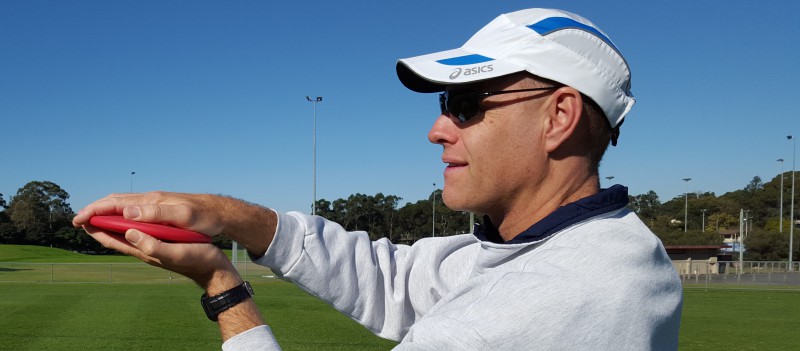A Simple Drill For Your Triple Jump Teaching Toolbox
A triple jump consists of three phases. These are commonly known as:
- Hop – the child takes off and lands on the same foot.
- Step (I prefer “leap”) – the child leaps to their other foot.
- Jump – the child lands in the sandpit on two feet.
i.e. After the first take-off, the child lands on the same foot, the other foot, then both feet. They perform two take-offs from the same foot, then one from the other foot.
Assuming that a child hops and steps from their preferred foot (which I recommend), they will perform the jump phase from their non-preferred foot. They essentially long jump from their “wrong” foot.
This “wrong foot” jump phase can be developed by practicing “wrong foot” long jumping.
Ideally, the aim is for the child to become as confident jumping from their non-preferred foot as they are jumping from their preferred foot.
Triple Jump Board Transition
Triple jump boards for kids in Australia commonly start at 5 metres from the landing pit. They are then set at 2-metre intervals i.e. 7 metres, 9 metres, etc. Beginners will most likely use the 5-metre board.
As kids improve, they may start to ‘outgrow” a board that is too close to the pit for them. Taking off from a board too close to the pit will ‘cramp their style’. Many will need to shorten their step so as not to land it in the pit. This will limit their scope to improve.
A young athlete is ready to progress to a new take-off board once they are consistently capable of triple jumping well over the distance that the new take-off board is from the pit. E.g. To use the 7-metre board, the child must be regularly jumping well over 7 metres and preferably closer to 8 metres.
To manage the risk of landing on the runway and the fear that some kids may have, I suggest that this transition is done in manageable, bite-sized steps.
“Wrong foot” long jumping can form part of this process.
How to Use Wrong Foot Long Jumping To Assist Triple Jump Board Transition
A child starting their hop 2 metres further back from the sandpit will land their hop and step roughly 2 metres further back from the pit than what they are used to.
Consider a child who can triple jump 8 metres. If using the 5-metre take-off board, their step will probably land near the edge of the sandpit and they will jump a long way into the pit. If they use the 7-metre take-off board, their step will probably land about 2 metres back from the sand. Suddenly they are no longer faced with soft sand, but a hard runway beneath them during their flight. They will need to jump over 2 metres of runway before they make it into the landing pit. Rather than landing far into the pit, the child might land just inside the pit and a lot closer to the edge than before. It will be the same for a young athlete who can jump 10 metres:
An older athlete able to triple jump 12 metres from the 11-metre board may need to jump over 3 metres (or more) of runway before reaching the sand. Imagine long jumping over 3m of runway off your preferred foot, let alone your non-preferred side? The ability to long jump from 3 metres back from the pit from their non-preferred foot will ready the athlete physically and psychologically to do this during a triple jump.
Once you can estimate the point on the runway where the jump take-off will occur, arrange for the young athlete to practice long jumping from their non-preferred foot from this point.
NOTE: When first learning to long jump from the non-preferred leg, it is worthwhile incrementally increasing the take-off distance from the pit.
Whether it be an 8-metre triple jumper transitioning from the 5-metre board to a 7-metre board; or an 11.70-metre jumper moving from the 9-metre to the 11-metre board, “wrong foot” long jumping can serve as an important part of your transition strategy.
Resource
Triple Jump Phase Landings Quick Reference Guide by Coaching Young Athletes
If this post helped you please take a moment to help others by sharing it on social media. If you want to learn more I encourage you to leave questions and comments or contact me directly.
Darren Wensor is a sports development professional, coach educator, specialist coach of young athletes, and founder of the blog coachingyoungathletes.com. Learn more about him here and connect with him on Twitter, Facebook, Linkedin, or via email. Check out Coaching Young Athletes on YouTube, the Coaching Young Athletes podcast, and the Coaching Young Athletes E-Book Series.




